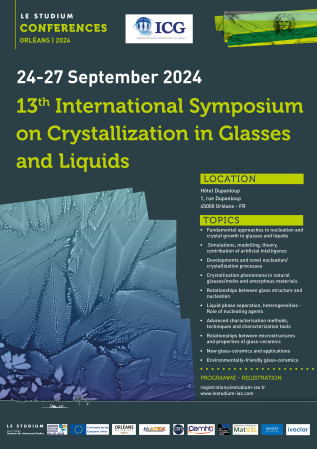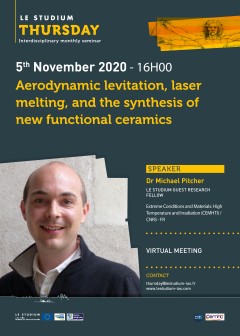Dr Michael Pitcher

From
Extreme Conditions and Materials: High Temperature and Irradiation (CEMHTI) / CNRS - FR
In residence at
Extreme Conditions and Materials: High Temperature and Irradiation (CEMHTI) / CNRS - FR
Host scientist
Dr Mathieu Allix
PROJECT
New metastable oxides by rapid cooling from the melt and low temperature devitrification
Inorganic materials discovery is an important driver of technological innovation and has an impact on contemporary challenges such as energy harvesting and storage (e.g. via new photovoltaics or batteries), environmental and strategic issues (e.g. lead-free ferroelectrics and rare-earth-free magnets) and in many fields of commercial interest (e.g. data storage). The limitations of conventional synthesis routes and the huge number of possible elemental combinations motivates the development of new approaches to discovery, including both innovative synthetic and computational methods, to expand the range of accessible materials and accelerate progress. In this context, my project aims to isolate a suite of new functional oxides using glass crystallisation from containerless aerodynamic levitation melting (ADL) – an underexplored synthesis method being pioneered at CEMHTI – to access new metastable compositions and structures that cannot be synthesised by conventional high-temperature methods. The programme is accelerated by a computational prediction method that focuses experimental effort on the most promising candidates, in collaboration with the University of Liverpool. This will be the first time that ADL synthesis is harnessed to a computational acceleration method in the search for new materials. The resulting synergy will maximise both the phase space that can be addressed, and the number of compounds that can be accessed synthetically. The establishment of this methodology at CEMHTI will have long-term benefits in areas of active interest, including battery materials and optical materials. The programme will be supported at CEMHTI by high-quality in-house instrumentation including high-temperature X-ray diffraction, double-aberration-corrected TEM and high-field high-temperature NMR facilities, permitting multi-level structural characterisation of the new compounds obtained.




